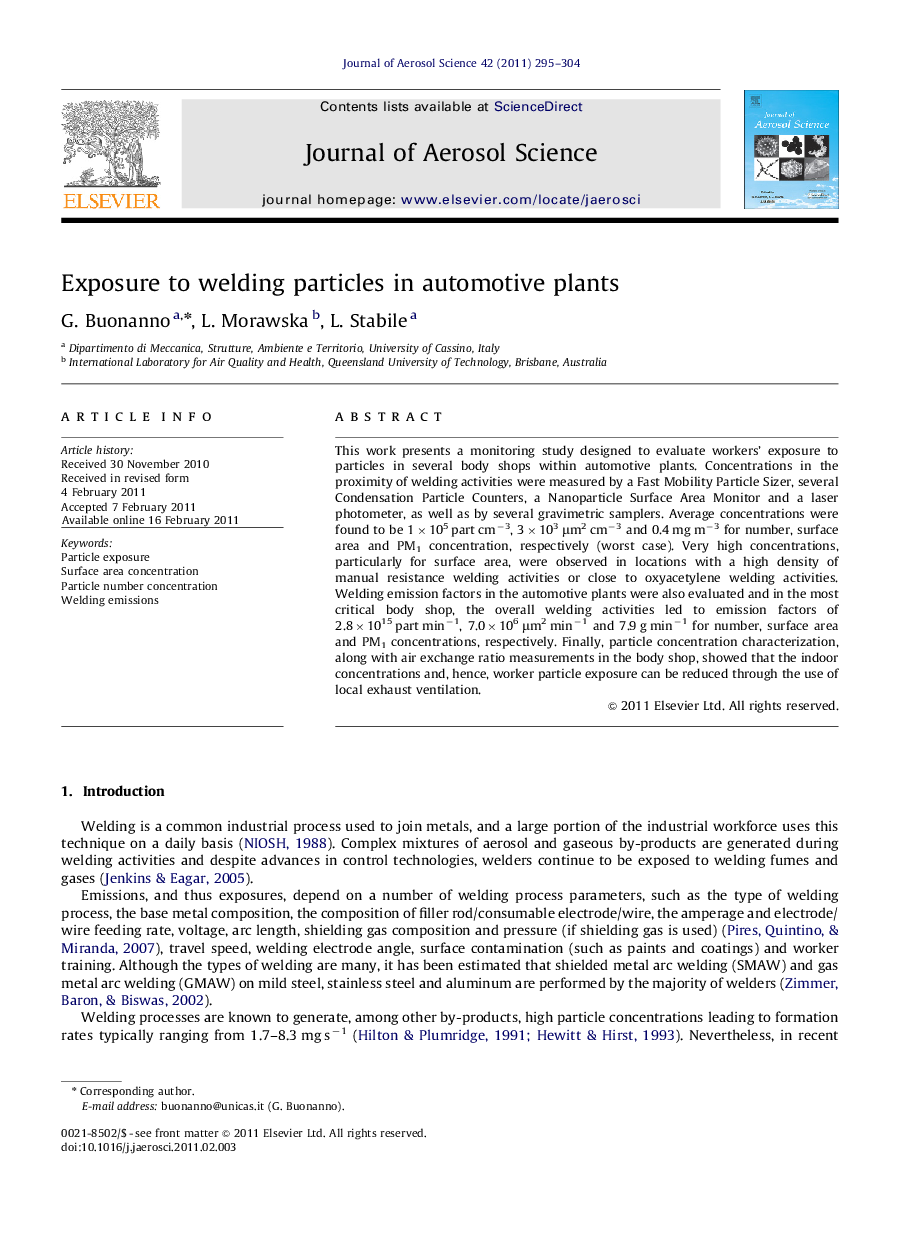| Article ID | Journal | Published Year | Pages | File Type |
|---|---|---|---|---|
| 4452768 | Journal of Aerosol Science | 2011 | 10 Pages |
This work presents a monitoring study designed to evaluate workers' exposure to particles in several body shops within automotive plants. Concentrations in the proximity of welding activities were measured by a Fast Mobility Particle Sizer, several Condensation Particle Counters, a Nanoparticle Surface Area Monitor and a laser photometer, as well as by several gravimetric samplers. Average concentrations were found to be 1×105 part cm−3, 3×103 μm2 cm−3 and 0.4 mg m−3 for number, surface area and PM1 concentration, respectively (worst case). Very high concentrations, particularly for surface area, were observed in locations with a high density of manual resistance welding activities or close to oxyacetylene welding activities. Welding emission factors in the automotive plants were also evaluated and in the most critical body shop, the overall welding activities led to emission factors of 2.8×1015 part min−1, 7.0×106 μm2 min−1 and 7.9 g min−1 for number, surface area and PM1 concentrations, respectively. Finally, particle concentration characterization, along with air exchange ratio measurements in the body shop, showed that the indoor concentrations and, hence, worker particle exposure can be reduced through the use of local exhaust ventilation.
Research highlights► Estimation of worker exposure inside the body shop of three automotive plants. ► Measurement of the critical factors affecting the level of exposure. ► Dimensional characterization of particles produced by different welding. ► Significant contribution to health and risk assessment for automotive plants.
